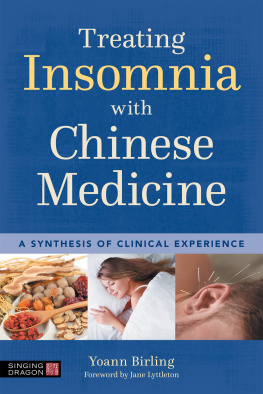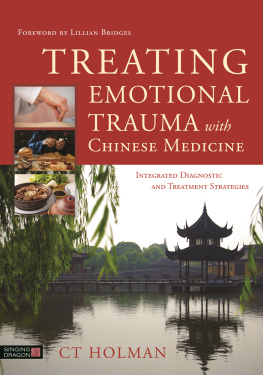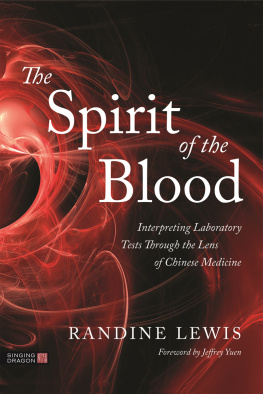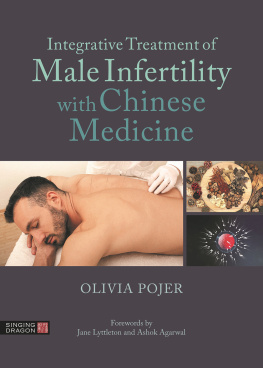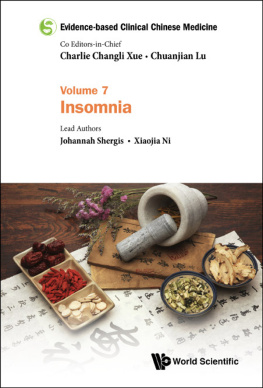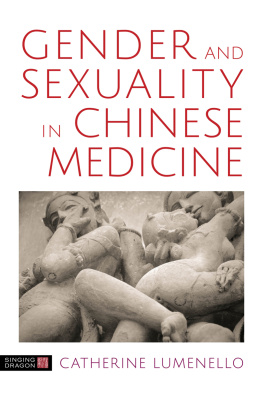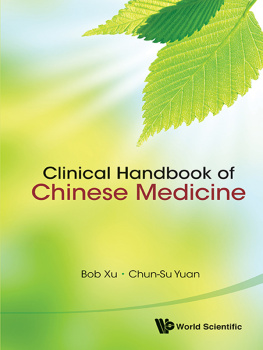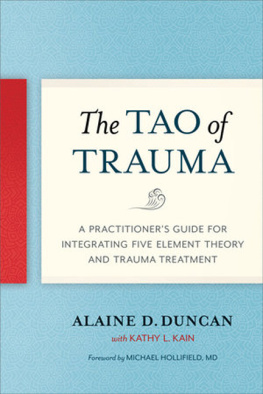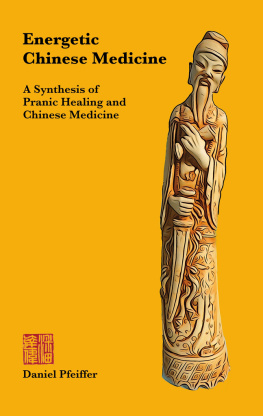Contents
Page list

of related interest
Acupuncture for Headaches, Eyes and ENT Pathologies
Hamid Montakab
ISBN 978 0 85701 404 7
eISBN 978 0 85701 405 4
Treating Emotional Trauma with Chinese Medicine
Integrated Diagnostic and Treatment Strategies
CT Holman, M.S., L.Ac.
ISBN 978 1 84819 318 5
eISBN 978 0 85701 271 5
Treating Psoriasis with Chinese Herbal Medicine (Revised Edition)
A Practical Handbook
Sabine Schmitz
Foreword by Steve Clavey
ISBN 978 1 78775 349 5
eISBN 978 1 78775 350 1
Treating Acne and Rosacea with Chinese Herbal Medicine
Sabine Schmitz
Foreword by Dan Bensky
ISBN 978 1 78775 227 6
eISBN 978 1 78775 228 3
TREATING
INSOMNIA with
CHINESE MEDICINE
A Synthesis of Clinical Experience
YOANN BIRLING
Foreword by Jane Lyttleton

First published in Great Britain in 2022 by Singing Dragon An imprint of Jessica Kingsley Publishers
An imprint of Hodder & Stoughton Ltd
An Hachette Company
Copyright Yoann Birling 2022
Foreword Copyright Jane Lyttleton 2022
The right of Yoann Birling to be identified as the Author of the Work has been asserted by him in accordance with the Copyright, Designs and Patents Act 1988.
Front cover image source: Shutterstock and Deposit Photos. The cover image is for illustrative purposes only, and any person featuring is a model.
All rights reserved. No part of this publication may be reproduced, stored in a retrieval system, or transmitted, in any form or by any means without the prior written permission of the publisher, nor be otherwise circulated in any form of binding or cover other than that in which it is published and without a similar condition being imposed on the subsequent purchaser.
A CIP catalogue record for this title is available from the British Library and the Library of Congress
ISBN 978 1 83997 230 0
eISBN 978 1 83997 231 7
Jessica Kingsley Publishers policy is to use papers that are natural, renewable and recyclable products and made from wood grown in sustainable forests. The logging and manufacturing processes are expected to conform to the environmental regulations of the country of origin.
Jessica Kingsley Publishers
Carmelite House
50 Victoria Embankment
London EC4Y 0DZ
www.singingdragon.com
Contents
When Yoann asked me to write the foreword to this book he could not have known that sleep is one of my favourite topics (and a favourite pastime). Sleep is also an intriguing mystery of human behaviour, that peculiar state akin to coma, death or anaesthesia about which we still know so little. So needless to say, I was delighted by the request.
I, like so many parents of babies who dont sleep, developed an enduring obsession with sleep some decades ago. We, the legion of exhausted parents kept awake during the wee hours of the night, have insight into the effects of sleep deprivation. It is a kind of torture not confined to the pages of spy novels.
Sleep deprivation however is not the same as insomnia. But after month or years of interrupted sleep many parents do lose the capacity to sleep well. As do people who work shift work for an extended period of time. The same can apply to people who experience damaging stress, illness, mood disorders or hormone disruptions. In fact, we might think that modern city life is creating for all of us a nightmare scenario when it comes to healthy sleep conditions (even without a baby). We are seemingly always switched on, constantly bathed in the blue light from the screens of displays and devices, and have artificial lighting illuminating the city and the sky all night. But sleep historian Professor Roger Ekirch claims that at no time in history have conditions from human slumber been better than today. Compared with 99 percent of our ancient ancestors, we have better beds, better blankets, better houses, and fewer late-night pests. So I wonder, as did Yoann, what is it that brings so many patients to a Chinese medicine clinic seeking help for insomnia?
Humankind has long been intrigued by the phenomenon of sleep. There have been many books written about sleep from popular ones like Ariana Huffingtons (of the famous eponymous Posts), and bestselling ones like Matthew Walkers Why We Sleep , to historical treatises and scientific books covering sleep medicine reviews. A quick internet search for books on sleep gives more than 50 current titles I have read quite a few of them. But this book on sleep may well turn out to be my best pick due to a number of reasons:
it looks at sleep from a traditional Chinese medicine (TCM) perspective (another favourite subject)
it explores some of the mysteries of why we sleep, and what is going on when we cant
it tells stories about real people and real sleep problems as described by hundreds of TCM doctors in China
it creates an easy to understand synthesis that analyses and summarizes what our TCM forbears have thought important when treating insomnia
it explores solutions to various pathologies that cause debilitating chronic insomnia.
Most TCM doctors will read this book to learn more about techniques they can use to make them more effective in the clinic. But what makes this book different is the authors interest in finding and creating clinical guidelines by searching through literally hundreds of case histories. Yoann analyses 560 clinical experience reports that he found in the Chinese academic literature to generate a clinical experience synthesis (CES), the result of which is a large part of the book you hold in your hands (or see on your screen). He claims (and no one can argue his point) that the strength of this book is in the pooling of clinical experience from many different sources. Yoanns academic training gives him the tools to analyse this large pool of clinical experience in such a way as to create useful hierarchies that can guide clinicians to make the best treatment decisions.
At the outset this book offers a physiological description of the parts of the nervous system responsible for sleep and wakefulness located in the back of the neck, base of the head and top of the spine the dumai of course. And just so you get the point of CES straight away, we are told that dumai is the most commonly used meridian for insomnia treatment. That may be news to a number of acupuncturists I know. This sort of synthesis also shows that the most common pathological mechanism of insomnia (out of eight described) is liver qi stagnation, which may also be a little unexpected for some of us. While an unstable shen is known to be the basis of insomnia, this finding of Yoanns tells us that stress is a major contributor to disorders seen in patients in China just as it is in the West.
Yoanns CES is illustrated by word clouds. You will have seen these on websites and blogs, but this may be the first time you will have seen them in a TCM text. Such visual cues help the reader get an instant appreciation of how to view a hierarchy of symptoms, herbs or formulas from the most common incidence to the least common incidence among the case reports he examined. TCM herbalists will enjoy the depth of analysis of herbal formulas (including those from the classics), and acupuncturists will be fascinated to see which points the authors of the Chinese case reports liked to use the most.
In addition to covering well-known TCM patterns, Yoann includes the impact of gender, age, personality, climate, the 24-hour clock and comorbidities on insomnia and its diagnostic patterns. And in addition to the more common techniques used by TCM doctors, this text includes other remedies such as herbal foot baths and pillows, herbal pastes for the navel, soles or palms, and food therapy. Tuina , acupressure, hypnosis and cognitive-behavioural therapy are also discussed as treatment options.

